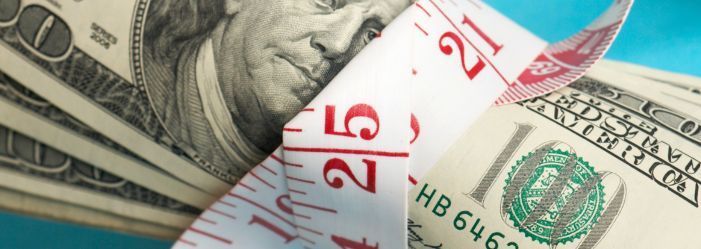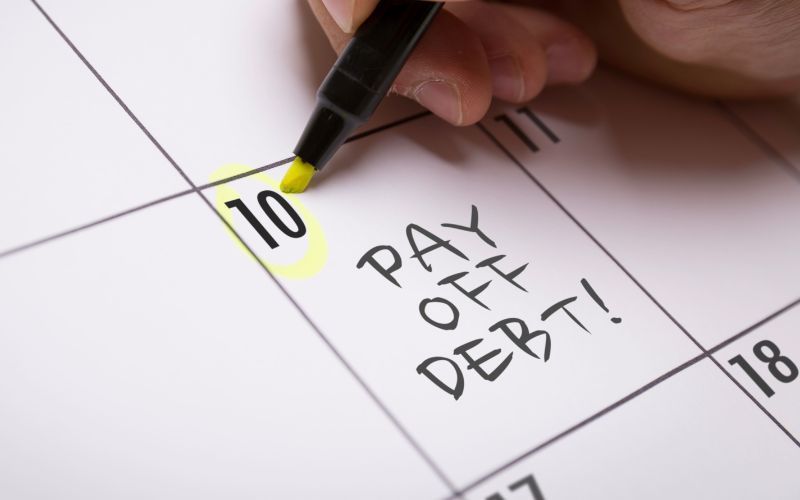March 29, 2024
A guide to paying off credit card debt on a limited budget

Disclaimer: We are not qualified legal or tax professionals and are not giving advice. Always speak with a qualified professional before making any legal or financial decisions.
Feeling overwhelmed by credit card debt while navigating a tight budget can seem like an insurmountable challenge. Yet, with the right approach and determination, it's entirely possible to break free from the shackles of debt and pave the way toward financial freedom.
This comprehensive guide is designed to equip you with effective strategies and practical tips to tackle your credit card debt, even when finances are stretched thin. From understanding your debt to creating a tailored payoff plan, we'll walk you through each step of the journey.
Whether you're considering debt consolidation, looking to modify your spending habits, or seeking ways to boost your income, our goal is to empower you with the knowledge and tools you need to reduce your debt significantly and achieve long-term financial stability.
No interest in reading? Click here for an immediate free consultation with a debt specialist.
Assess Your Debt Situation
Your first step to paying off your credit cards is understanding your overall debt situation. This involves putting everything into writing, so grab some paper and a pen or open a spreadsheet and let's get started.
List of all credit card debts
Write down the name of the credit card, the balance due, credit limit, minimum monthly payment, due date, and interest rate for each card. Make a note if payments are up-to-date, etc.
The total amount of debt
Next, write down any other debt you have with the same information. This includes your car loan, medical debt, outstanding debts, child support, and personal loans.
You should have a good picture of what you owe and your monthly payments.
Interest rates
When you borrow money, you pay to use that money. There are two types of interest, simple and compound.
Simple Interest Rate
Simple interest means that you pay a set interest rate every month. For instance, if you have a car note, you pay principal (part of the total amount you borrowed) and interest - a set amount based on the Annual Percentage Rate (APR). The payments never change.
Compound Interest Rate
Compound interest means that you pay interest on your interest. When you make only the minimum payment, most of that will go to interest charges and a little goes toward the principal. Then you are charged interest which is added to the total amount you owe. The next month, you make a payment, and most of it goes to interest payment... wash, rinse, and repeat.
This is why it is incredibly difficult to pay off a credit card!
Minimum payments
If you want to pay off credit card debt, you must do two things. The first is to make more than the minimum payments, and the second is to stop using your credit cards. Making only the minimum payments will not pay down your card.
Evaluate Your Budget
Now, examine your income and expenses. This is the first step in understanding where your money is going, where to cut back, and how to prioritize bill repayment, ie create a budget. This process can take several months to refine, but as with any activity, you will only get better at it as you practice!
Income and expenses
Now write down your net (after-tax) income and any other sources you may have. If you work on commission, base your income on an average of several months.
Next, write down all your expenses. This means everything! You may need to track where every penny goes for a couple of months. You'll probably be surprised at where you spend money unconsciously. It is easier to look at monthly expenses rather than daily expenses, as the daily expenses look far worse examined as monthly spending.
Whether or not your income exceeds your expenses, you still have some work to do on cutting those expenses. This is to free up money first to pay off credit card debt and then to set aside money you can use instead of grabbing your credit card.
Prioritize expenses
In this section, you will examine your expenses. Categorize them into wants and needs. A need is anything you must have to survive, like food, shelter, etc. A want is anything you can survive without, but that makes life more fun.
Prioritize the most important expenses. Your most important expenses must include debt payments.
Now you get to look at everything that is left.
Identify areas to cut back spending
To free up money to pay off debt and set yourself on a better financial path is to cut expenses. We are not suggesting that this is a forever thing and you will never eat out again - once you pay down your debt, you can add back the fun stuff. We are also not suggesting that you cut out everything fun - instead, maybe cut back.
You spend a lot on dining out or grabbing a coffee every day. This is going to add up fast. Instead of eating out daily, pack a lunch, and eat out once every two weeks. Make your coffee and buy one once a week.
Subscribed to every streaming service available? Drop most of them and keep your favorite for now.
If you cut everything and still do not have enough money to put toward your debt, you will have to take a hard look at your needs. Do you need to move to a less expensive home? Can you add a roommate? Can you trade in your car for a cheaper option?
We are taught to be consumers and trained to believe we need the best of everything. You do not need to keep up with the Joneses, and you do not need the latest and greatest of every gadget. The choice is yours - live debt free or spend money to maintain a lifestyle you cannot afford.
Make More Money
The final step is to make more money. This can be getting another job, getting a better job, or taking on a side gig. Most of us are already working as hard as we can. So look for other options whenever possible.
Think about unloading a lot of the junk you don't use, especially if you have storage sheds full of it. Sell it, donate it, give it away - get rid of it, especially if you are paying for storage.
You will set the money aside for the next step when you sell something.
Create a Debt Repayment Plan
Now that you understand how much money is coming in and how much is going out, it is time to set up a custom debt repayment strategy that fits your budget.
First, if all this seems overwhelming, there is help available. Look for a non-profit credit counseling agency that can help you examine your financial situation and will teach financial management.
Look for an accredited agency with good recommendations. There are scammers posing as credit counselors, so pay attention to who you trust.
All these strategies are based on the premise that you STOP TAKING ON MORE DEBT. Put your credit cards away.
Decide on a realistic goal and write it down, maybe like "I will repay my debt in five years" or "I will pay off my credit debt in 12 months." Just make it something you can do and look forward to completing.
There are at least five different strategies (snowball method, avalanche method, debt consolidation, debt settlement, balance transfer) touted by experts to help you repay your debt. There is no best because everyone is different and may do better with a different strategy.
Now, you know how much debt you owe, the interest rates, and how much money you can spend on debt repayment. Let's take a look at the strategies.
The Debt Snowball method
In the debt snowball method, you focus on paying off the smallest balance. You pay minimum payments on all the other debts while focusing on the smallest debt. Once that is paid off, you focus on the next smallest debt.
The Debt Avalanche Method
In the debt avalanche method, you first pay down the higher interest balances. Again, you make the minimum monthly payments and roll over the payments as you pay off each debt.
There is not a lot of interest savings or speed difference between these methods except as a psychological reaction. If you like to see fast results, go for the snowball. You can combine the two by paying off several smaller debts and tackling the highest interest rate.
Debt Consolidation loan
Another way to pay off high-interest debt is to take out a debt consolidation loan and repay the debt in a single monthly payment There are several steps to accomplish this. You need to be able to get a lower-interest personal loan, and you need to have a plan to repay the debt consolidation loans.
Interest rates are based, in part, on your credit scores. If you have poor or bad credit, you probably will not be able to get a low-interest loan. Be very careful about taking out a home equity loan to repay debt. You can possibly lose your home if you default on this debt consolidation loan.
Balance Transfer Credit Cards
Another type of debt consolidation is a balance transfer card. These cards have a very low or zero interest rate. You then transfer balances to the card and repay it.
DO NOT use a balance transfer credit card if you have not read the fine print and do not have the plan to repay the card. The post-promotional period interest rate is often far higher than your existing cards', and there can be balance transfer fees, usually a percentage of the debt.
Debt Settlement
The final method we are going to address is debt settlement. Debt settlement involves negotiating a reduced amount owed and then making a lump sum payment to pay it off.
This method may have tax consequences and possible credit score issues, so always understand what you are getting into. Talk to a debt specialist and get a FREE consultation today!
Take Action to Reduce Your Debt
Now that you have a plan, you need to follow it. Remember, it is not forever.
You must make timely payments. If this is an issue, talk to your credit card company about changing due dates (get it in writing) so that payment matches with paydays.
Put your credit cards away. We will address how to avoid credit card use in the next section.
Ask credit card companies to work with you. They might adjust interest rates, payment dates, or total amounts to repay.
Find an accredited credit counselor to help you stick to a budget.
Tips for Living on a Tight Budget
While your budget is tight, you must learn to manage your money. This means reducing expenses while increasing income. By having even a simple budget, you can identify if you can afford an item and if it is a need or a want. Focus for now on meeting your needs.
Use all or most of any windfall money to pay down your debt.
Look for free or discounted resources. Love movies or books? Check out your local library. Make going to the movies a special event. Look for inexpensive entertainment.
Remember, paying off all your debt and not taking on more debt will free up money in the future. This tight budget is hopefully not forever!
Focus on Long-Term Financial Goals
Now that you have a plan for paying down your debt, there are three important considerations for saving money using one or more accounts after your debt is gone. You can start working on these, but remember your priority is your debt repayment strategy.
Create a savings plan
As you pay down your debt, plan to put money aside. Your goal here is to build up enough cash reserves that you do not need your credit card. Set aside money for tires, new clothing, etc, to stop borrowing money from your credit card accounts.
Build an emergency fund
Set up a separate account and work on saving up $1000 with an eventual goal of three to six months of living expenses. You will spend this extra money on true emergencies like a breakdown in your transportation, medical emergencies, etc.
Invest in retirement
Finally, set up yet another savings account for retirement. Set a goal of $1000 and transfer most of the money to a retirement fund like an IRA. Then build up the balance again. For this, you will need to speak with a qualified financial advisor.
Conclusion
Credit card debt is the hardest debt to get out of and can potentially cost you thousands of dollars. It can even drive you to bankruptcy.
You can get out of credit card debt, but it will take discipline, effort, and a little deprivation. It can be done, and it is extremely important to your financial future.
Talk to a debt specialist today and get a FREE consultation.
*Disclaimer: Pacific Debt Relief explicitly states that it is not a credit repair organization, and its program does not aim to improve individuals' credit scores. The information provided here is intended solely for educational purposes, aiding consumers in making informed decisions regarding credit and debt matters. The content herein does not constitute legal or financial advice. Pacific Debt Relief strongly advises individuals to seek the counsel of qualified professionals before undertaking any legal or financial actions.
✔ Accredited by Better Business Bureau with BBB A+ rating (4.93 rating and 1678 reviews)
✔ US News and World Reports and Bankrate ranked Pacific Debt Relief as one of “The Best Debt Relief Companies of 2024”
✔ 6.9 star rating by BestCompany.com (over 2379 client reviews)
✔ 4.8 star rating by TrustPilot based (over 1613 verified consumer reviews)
✔ ConsumerAffairs.com Accredited (over 544 verified reviews with an average rating of 5 stars)
✔ A Top 10 Rated Compan by TopTenReviews.com , ConsumersAdvocate.com and Top10debtconsolidation.com
✔ 4.6 star rating by Google (229 client reviews)
✔ 100% rating by SuperMoney (9 client reviews)
Reduce Your Credit Card Debt By Up to Half

BBB Reviews | 4.9/5.0 Rating









 Do Not Sell My Personal Information
Do Not Sell My Personal Information